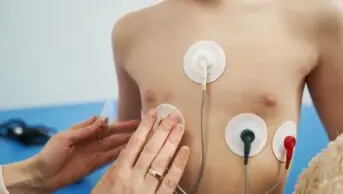
Mclean
Medication errors in children are common, and they can have serious consequences. Studies indicate that around one in eight medication orders for paediatric inpatients in UK hospitals contains an error and drug errors are the most common safety incident in sick children in the community.
Ranging from dispensing errors, mistakes in administration or preparation or problems communicating with children or their carers; there are several problems which make it harder to ensure this patient group gets the right treatment.
Licensed indications often do not cover the clinical needs of children and so drugs are often used outside of the regulatory framework for medicines
Healthcare professionals face a large evidence gap. The research and development of drugs and devices for paediatric patients is often complicated by practical and ethical difficulties.
Children are not simply small adults; differences in the physiology and metabolism of children mean that data from adult studies cannot be easily applied to children. Drug doses in paediatric medication are calculated individually, based on the patient’s age, weight, body surface area and/or their clinical condition, which may lead to more errors.
Licensed indications often do not cover the clinical needs of children and so drugs are often used outside of the regulatory framework for medicines. For example, one study showed that around 55% of prescription episodes in neonates admitted to hospital were ‘off label’ and 10% were unlicensed.
Furthermore, the fundamental physiology of children is changing. Obesity is on the rise, with the number of overweight or obese infants and young children increasing from 32 million globally in 1990 to 41 million in 2016. Not only are obese children at a greater risk of conditions, such as type 2 diabetes mellitus and hypertension, but also at a greater risk of overdose if total body weight is used inappropriately during dose calculations.
To help advance the use of medicines in paediatrics, The Pharmaceutical Journal is inviting article submissions on this subject from all sectors of pharmacy. Suitable topics include the impact of pharmacists and pharmacy professionals in improving the health of children; articles covering evidence-based management and best practice across all sectors; innovative policies or schemes that seek to improve the health of children; and also any other contributions from relevant experts or passionate advocates for paediatric health who wish to see change.
Article types accepted by The Pharmaceutical Journal
include research articles, reviews, CPD articles, opinion pieces and short communications. We will offer help and support to those who are submitting articles for peer review. Articles, ideas and expressions of interest should be submitted by email to editor@pharmaceutical-journal.com, with a short explanation detailing the importance of the work or idea and clearly stating that the submission is in response to this call.
We hope to collect enough on this topic to make a real change in the way children and young people are treated. Thank you in advance for your help in this endeavour.


